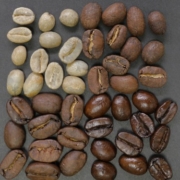Java and C++ are somewhat syntactically similarly languages that have diverged over time. Java was loosely inspired by C++, but initially didn’t adopt C++’s template structures, nor did it require C++’s header/content file separation, and of course, it used the JVM and compiled to bytecode rather than machine code.
Articles
Many companies have broken into the cloud market segment and created their own cloud services of various purposes. Recently our team has also been interested in integrating the PVS-Studio code analyzer into our own cloud infrastructure. Chances are, our regular readers have already guessed what type of project we will check this time. The choice fell on the code of Huawei cloud services.
You may also enjoy: Using PVS-Studio to Get Beginners Familiar With Code Analysis Tools
Introduction
If you’re following PVS-Studio team posts, you’ve probably noticed that we had been digging deep in cloud technologies lately. We have already published several articles covering this topic:
A common dilemma faced by many developers is whether to go with Android or IOS? Well, all I can say is, “it all depends on CHOICES!” To me, Android is the best bet. Why? Android today has managed to hold 88% of the global market, whereas competitors like Apple’s IOS and Windows are way behind.
In this tutorial, I will take you through an introduction to Android app development, so you can get started building your own.
Java gained a reputation as a secure programming language when it was introduced in the mid-1990s. At that time, C or C++ was used for the majority of business programming. Java removed many pitfalls and vulnerabilities of those languages, like manual memory allocation.
This reputation as a more secure language does not mean that all Java code is automatically secure. Developers still have to make sure that they deliver secure code. Fortunately, you can stay on top of your Java security by keeping an eye on possible Java threats.
I am very excited to share my experiences building Continuous Integration/Continuous Delivery (CI/CD) into Spring-Boot-based Java applications. First, let’s establish everything we will learn in this tutorial:
Step 1) Create a Spring Boot Java App using Spring Initializr
Originally published on January 31, 2015
How do we implement database relationships using spring data JPA?
In this post, we will show you how to use Spring Batch to read an XML file with your ItemReader using StaxEventItemReader and write its data to Oracle Database using Custom ItemWriter. We will also learn how to use ItemProcessor to process input data before writing to the database.
Custom ItemReader or ItemWriter is a class where we write our own way of reading or writing data. In Custom Reader we are required to handle the chunking logic as well. This comes in handy if our reading logic is complex and cannot be handled using Default ItemReader provided by spring.
Declarative code (e.g. functional composition with Streams) provides superior code metrics in many cases. Code your way through this hands-on-lab article series and mature into a better Java programmer by becoming a Master of Java Streams.
The whole idea with Streams is to represent a pipeline through which data will flow and the pipeline’s functions operate on the data. This way, functional-style operations on Streams of elements can be expressed. This article is the first out of five where you will learn firsthand how to become a Master of Streams. We start with basic stream examples and progress with more complex tasks until you know how to connect standard Java Streams to databases in the Cloud.
We are very happy to report that we’ve successfully passed all of nearly 50,000 test suites of Jakarta EE 8 TCK, and Payara Server 5.193.1 is Jakarta EE 8 Full Profile compatible!
You may also like: Jakarta EE and Beyond!
The Payara team is extremely proud to be among the first to achieve Jakarta EE 8 Full Platform Compatibility, starting with Payara Platform 5.193.1. This is a significant milestone for Payara, and the team has done a huge amount of work to get this done. I think this is a great adoption story for Jakarta EE, in general, as Payara Server is not a Java EE 8 implementation. Furthermore, this shows that Jakarta EE is an open standard and can bring in new organizations and implementations.

Java 8 introduced a new era of Java. Everything from lambda expressions and functional programming to Streams and collections — DZone was there to document it all.
So whether you’re migrating over to Java 9 or Java 11, or maybe even Java 13, Java 8 concepts and features are still very much alive in the JDK. And understanding these core concepts can help tremendously when it’s time to move beyond Java 8.










